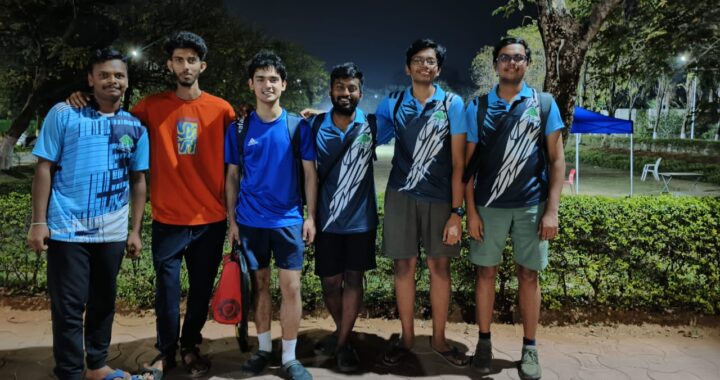Got Placed…?
Placements being the “it” issue in the past couple of months, team Ping! decided to contact our dear seniors for valuable information and opinions. Read on….
CSE PLACEMENTS
The placements this year have taken a beating as compared to the last and previous years. The college has not yet finished 100% placements after a period of 2.5 months since the beginning of the season. This is in huge contrast to last year when the placements were almost completed within two weeks of the beginning of the season. The average package for this year is yet to be calculated and announced, although it is expected to be in the vicinity of INR 9L.
We try to find out the reasons for the downward dip surrounding the results of Placements 2013.
One of the main reasons was the increase in the number of candidates. Last year, there were approximately 180 people who sat for placements as opposed to ~300 this year. This is a very sharp increase. For the CSE branch itself, there was an increase of 25 students; from 77 in the previous year to 102 this year. This is an inevitable problem. It is something that the college will encounter every year, since it has continuously been increasing the batch strengths.
The only solution to this problem is to invite more companies for placements. However, that is not as easy as it sounds. IIIT-H is essentially a nascent institute, only around 12 years in age. The college has great students graduating each year, which is why most of the companies that come to our college are repeats. But in order to increase the number of companies, new territories need to be explored. This is where the 8% rule creates trouble. A company, say Google, which has regularly taken students from here, and has experienced the professionalism that the students have, will most probably be willing to dish out 8% to get the best students. But a company which has never been here before will always be skeptical about paying 8%. Our infant college might be flexing its muscles too hard just on the backing of good placements for a few years.
The second major reason is the placement schedule of the companies. A 2-phase system of placements was implemented this year because of the 8% rule. This rule states that the on-campus hiring companies need to pay the college 8% of the annual income being offered by them. This is applicable for every student they hire. Since quite a few companies (including Facebook, Goldman Sachs, CISCO, Electronic Arts, Morgan Stanley, etc.) were unwilling to pay 8%, it was decided that a second phase of placements be organized for the companies that were reluctant to pay the 8% fees.
Once the schedule for the companies was finalized, it was realized that a lot of the better- known and recognized companies were scheduled for the second phase. This meant that the companies which came towards the end of the first phase were not very lucrative and the students were reluctant to apply for these companies in order to give themselves a chance of participating in the second phase. This phenomenon resulted in a lot of wasted offers in the first phase.
The problems did not end with the first phase. The better known companies that came in the second phase were unhappy with the quality of students in the second phase and made significantly fewer offers compared to previous years. The SPC has unanimously noted that the companies are more willing to go to other colleges for similar quality students in order to avoid paying the additional 8% fees here.
Possible Solutions
It is not possible to control the number of students sitting for placements, given the growth of the college. However, there is a solution suggested by a group of students. The suggestion is to allow official internships to take place in the third year of engineering studies. Many companies look forward to hiring interns from the college, but are refused the opportunity. It is noticed that a lot of internship offers often get converted to pre-placement offers (PPOs). This results in a direct decrease in the number of candidates sitting for the placements in the respective season. Hence, this could be a potential solution to the problem.
More importantly, it has been realized, (not to the astonishment of many), that the 8% rule has affected the placement quality and statistics very adversely. The decision to revoke the 8% rule is in the hands of the college administration and the student community shares a unanimous view regarding that decision. It is hoped that the faculty will take a re-look at the 8% rule for the benefit of the placements of the future batches.
ECE PLACEMENTS
ECE placements kicked off 5 days after CSE placements began, on 5th December 2012. However, before initiating any further discussion, let us compare the statistics with previous years. Last year, there were 16 students aspiring campus placements in the ECE department. Around 3-4 Core companies participated. By the end of the first iteration of placements, almost everyone was placed (most of them in core companies).
This year, the picture seemed a little skewed. While some of the previous recruiters declined to participate, we saw some first time recruiters. The number of students in B.Tech ECE was 34, and a similar number of aspirants sat from M.Tech VLSI & CE branch. The first few companies were Qualcomm Inc. and nVidia Corp. Highest CTC was offered by Qualcomm. This was followed by a prolonged lull with respect to ECE placements. It was partly so because of rejection from non-core IT companies and partly due to absence of core ECE ones. The number of placed candidates increased slowly with first timers like Innopark, Morgan Stanley, UURMI, Redpine taking 3, 1, 2 and 4 students each. At that point of time, nearly 17 from B.Tech and nearly all from M.Tech were still jobless. A major sigh of relief came after Infosys took 11 students from B.Tech ECE making 100% placement a possibility.
As of today, the entire ECE batch is placed with remaining students having found jobs in Oracle, JDA Soft and Taram Software. But the crucial point to ponder remains: only about one-third students got placed in core companies. Consequently, a lot of suggestions came forward from students, alumni and industry professionals alike. A singular factor observed was internships. Most core electronics companies prefer taking interns for 6 months before offering a full-time job. Since such a model does not exist in the B.Tech environment, big companies like nVidia, Microsemi were more confident in taking interns from the M.Tech batch, as they had an option of converting their spring 2013 semester for internships.
To sum it up, all is not well in the ECE camp; there is increasing speculation that the present scenario is bound to affect future placement seasons — taking into account the fact that number of students is only going to increase. We, however, are quite optimistic and hope that this experience proves beneficial for future placement seasons.

 Cleaning up the Mess?
Cleaning up the Mess?  The Mess-y Situation
The Mess-y Situation  Qu’ils mangent de la grenouille! (Let Them Eat Frogs!)
Qu’ils mangent de la grenouille! (Let Them Eat Frogs!)  Tale of Two Cheenties
Tale of Two Cheenties  Peace of mind.
Peace of mind.  Boats and Valorant
Boats and Valorant  A perspective on sports in IIIT
A perspective on sports in IIIT  Paintings of IIIT
Paintings of IIIT  The Tale of Jagruti
The Tale of Jagruti